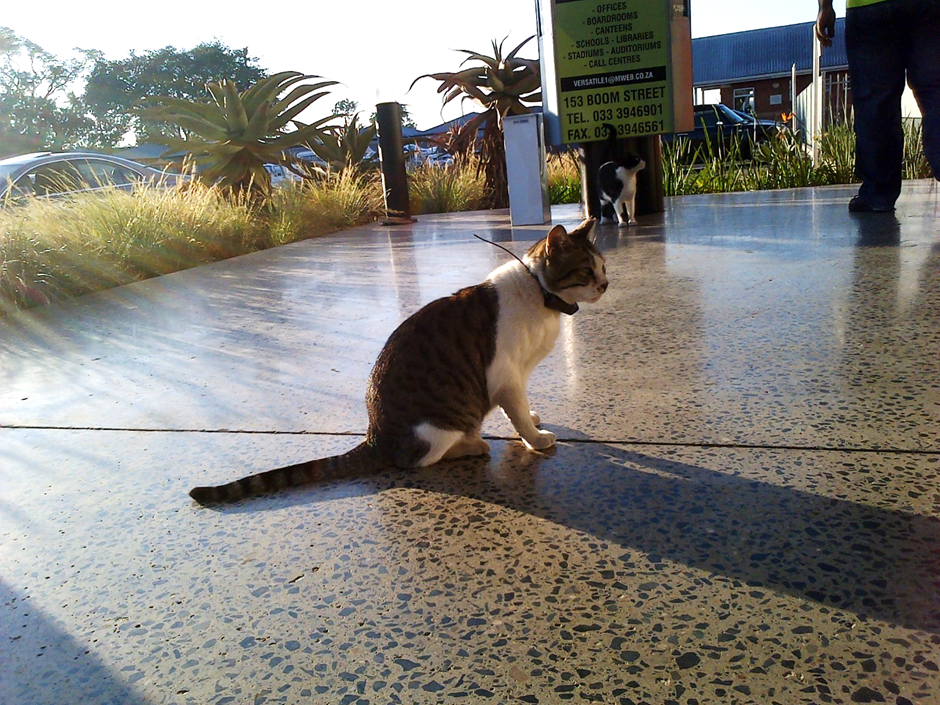23 July 2018 | By Kerushka Pillay
A recent study by C·I·B masters student, Kerushka Pillay, at the University of KwaZulu-Natal, revealed that home range, habitat use and movement of urban feral cats, Felis catus, were generally centred around supplemental resources such as food, in the town of Pietermaritzburg, also referred to as the “City of Choice”.
The feral cat is considered as one of the 100 world’s worst invasive alien species and has the potential to colonize a wide range of habitats with its high fecundity rate and its ability to get resources from its surroundings. Feral cats are mostly active at twilight and night; and are described as domestic or stray cats that have returned to a ‘wild like state’, which allows survival in an ecosystem for many generations with or without the help of humans.
The study, published in Urban Ecosystems, is the first in South Africa to use Global Positioning System (GPS) trackers on feral cats to determine their home range and how they use their habitat in an urban area.

Results showed that feral cat home ranges and core sizes were relatively small in an urban area and largely centred over a common or potential anthropogenic (due to human activity) supplementary food resources at each site, with considerable overlapping of individuals in the same vicinity. Feral cats favoured and used more of urban habitat types – manmade surfaces e.g. infrastructure and housing, over private – gardens within boundary of manmade structures e.g. plant fences, ornamental gardens; and green habitat types – natural surfaces e.g. grassland, open veld, natural forest, green belts. Night home ranges were larger than day suggesting that they moved further when human activity was low.
“It is unclear which mechanisms drive feral cat populations to exploit anthropogenic supplementary food resources. However, the consequences of feeding feral cats can increase survival and reduce home ranges and movement,” explains Pillay.
She adds, “Feral cats in the study used urban habitats where food resources were more available and accessible at feeding and garbage disposal sites which influenced their home ranges sizes. If cat populations are unmanaged and cats not sterilised, the increased population can heavily impact the local environment. Impacts such as increased cat fights, spraying and defecating on public property can result in health risks to humans and other wildlife. Diseases are more likely to spread between individual cats when populations are larger and can even spread to domestic cats.”
Read the full paper at:
For more information, contact Kerushka Pillay at kerushka@gmail.com



